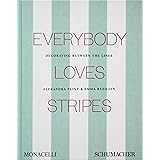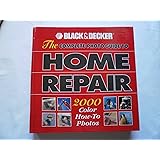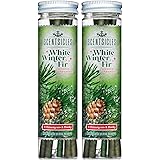After watching the inspiring visuals in the video above, you might be bursting with creativity, eager to transform your outdoor space. Many aspiring gardeners face common hurdles, whether it’s a small yard, a tight budget, or simply feeling overwhelmed by the possibilities. The dream of a beautiful, functional garden can seem distant, especially when you’re not sure where to start. However, achieving a stunning outdoor haven doesn’t require a sprawling estate or an endless bank account. With a few thoughtful strategies and some amazing garden ideas, you can cultivate a space that truly reflects your personal style and meets your practical needs. This article dives into practical approaches that can help you overcome these challenges and bring your garden vision to life, offering actionable steps for every type of gardener.
Transforming Small Spaces: Creative Garden Ideas for Compact Areas
Living in an urban environment or having a modest backyard shouldn’t limit your gardening aspirations. Small spaces often present unique opportunities for creativity and innovation. The key is to think vertically, utilize every available inch, and choose plants that thrive in confined conditions. Embracing these constraints can lead to some of the most charming and functional outdoor areas. From balconies to patios, there are countless ways to maximize impact without requiring extensive square footage. These amazing garden ideas prove that even the smallest corner can become a lush sanctuary with a little planning.
The Power of Pots: Container Gardening Essentials
Container gardening is a game-changer for anyone with limited ground space, offering incredible flexibility and design potential. You can grow almost anything in pots, from vibrant annuals and perennial flowers to herbs, vegetables, and even small trees. The beauty of containers lies in their mobility; you can rearrange them to create new looks, move plants to optimal sun exposure, or bring delicate species indoors during harsh weather. Selecting the right pot size and material is crucial, as is ensuring proper drainage to keep your plants healthy and thriving. Experiment with different heights and textures of pots to add visual interest to your patio or balcony.
When planning your container garden, consider a mix of plants that complement each other in terms of color, texture, and growth habit. A common design approach is to use a “thriller, filler, spiller” combination: a tall, dramatic plant as the thriller, medium-sized plants to fill in the space, and trailing plants to spill over the edges. This creates a full, lush arrangement that catches the eye. Remember to water container plants more frequently than those in the ground, as their soil tends to dry out faster. Fertilizing regularly will also provide the nutrients necessary for robust growth in a confined root space.
Going Up: Vertical Gardens and Green Walls
When horizontal space is scarce, looking skyward offers an ingenious solution for creating amazing garden ideas. Vertical gardens are an excellent way to introduce greenery into tight areas, turning blank walls or fences into living tapestries. These systems can range from simple tiered planters or hanging pockets to sophisticated hydroponic setups. They are perfect for growing herbs right outside your kitchen door, adding a splash of color with flowering plants, or even cultivating small edible greens. Installing a vertical garden not only maximizes planting area but also adds a stunning architectural feature to your outdoor space, creating a focal point.
There are many DIY options for vertical gardens, such as repurposing old pallets, creating a living wall with fabric pockets, or stacking planters. For a more integrated look, consider modular systems that can be easily expanded. Ensure your chosen wall can support the weight of the system, especially when filled with soil and watered plants. Proper irrigation is also vital for vertical gardens, as water can drain quickly. Drip irrigation or self-watering systems can be incredibly efficient, ensuring your elevated plants receive consistent moisture. This approach transforms underutilized vertical surfaces into vibrant, productive garden zones.
Budget-Friendly Garden Ideas: Achieving Grand Results on a Shoestring
Creating a beautiful garden doesn’t have to break the bank, and some of the most amazing garden ideas come from resourceful thinking. With a little ingenuity and a willingness to get hands-on, you can transform your outdoor area into a charming retreat without spending a fortune. Focusing on DIY projects, repurposing materials, and growing plants from scratch can significantly reduce costs. The satisfaction of crafting elements for your garden by hand also adds a personal touch that store-bought items simply can’t replicate. Embracing a budget-conscious mindset opens up a world of creative possibilities for your green space.
DIY Garden Projects: Upcycling for Outdoor Charm
Upcycling old items into new garden features is not only environmentally friendly but also incredibly cost-effective and adds unique character. Instead of buying new planters, consider transforming old tires, wooden crates, or even sturdy plastic bottles into quirky containers. An old dresser can become a tiered planter, with drawers pulled out at varying lengths to hold different plants. Mason jars can be hung to create charming fairy lights or miniature terrariums. Look around your home or local thrift stores for items that can be given a second life in your garden. These repurposed elements often tell a story and add an individualistic flair.
Building simple raised garden beds from reclaimed wood or pallets is another fantastic DIY project. These beds improve drainage, prevent soil compaction, and make gardening more accessible. You can also create charming garden pathways using salvaged bricks, broken concrete pieces (known as “urbanite”), or even stepping stones poured from homemade concrete mixes. For garden decor, consider turning old watering cans into decorative elements, or painting rocks to add pops of color. These hands-on amazing garden ideas allow you to customize every detail while keeping expenses low, resulting in a truly unique outdoor space.
Growing from Seed: A Cost-Effective Approach
One of the most budget-friendly ways to populate your garden is by starting plants from seed. A single packet of seeds, which costs only a few dollars, can yield dozens of plants, providing far more value than buying individual seedlings from a nursery. This method also gives you access to a much wider variety of plant species and cultivars that might not be available as young plants. Starting seeds indoors before the last frost can give your plants a head start, allowing them to establish robust root systems before being transplanted into the garden. This process is not only economical but also deeply rewarding, offering the satisfaction of nurturing life from its very beginning.
To successfully grow from seed, you’ll need a few basic supplies: seed-starting mix, trays or small pots, and a warm, bright location. A sunny windowsill works for many plants, but grow lights can significantly improve success rates, especially for those with longer growing seasons. Research the specific needs of each plant, including germination time, light requirements, and spacing. Patience is key, as some seeds take longer to sprout than others, but the eventual payoff of a lush garden filled with plants you grew yourself is immense. This fundamental practice is central to many amazing garden ideas that prioritize sustainability and personal effort.
Designing Your Oasis: Amazing Garden Ideas for Visual Appeal
Creating a visually stunning garden involves more than just planting flowers; it’s about thoughtful design that evokes emotion and guides the eye. A well-designed garden acts as an extension of your home, offering a tranquil retreat or an lively entertaining space. Consider elements like focal points, color schemes, and textural contrasts to craft an environment that feels balanced and inviting. By strategically arranging plants and hardscaping features, you can enhance the garden’s natural beauty and create distinct zones within a larger area. These amazing garden ideas focus on the aesthetic and functional aspects of landscape design, ensuring your outdoor space is as beautiful as it is usable.
Creating Focal Points: Drawing the Eye in Your Garden
Every captivating garden benefits from a focal point – an element that immediately grabs attention and provides a sense of direction. This could be a striking piece of garden art, a beautiful water feature, an unusual specimen plant, or a cozy seating area. A well-chosen focal point adds depth and interest, preventing the garden from feeling overwhelming or shapeless. It serves as an anchor, around which other design elements can be arranged. Consider what you want people to notice first when they step into your garden, and then strategically place that element to command attention.
When selecting a focal point, ensure it is proportionate to the size of your garden; a massive sculpture might overpower a small space, while a tiny birdbath could get lost in a large yard. Lighting can also be used to highlight your focal point at night, extending its visual impact beyond daylight hours. Paths can be designed to lead towards a focal point, drawing visitors deeper into the garden. Grouping plants with contrasting colors or textures around your chosen feature can further enhance its prominence. Thoughtful placement of a unique element can significantly elevate the overall design of your garden, making it truly memorable.
The Joy of Edible Gardens: Beauty and Bounty Combined
Integrating edible plants into your garden design offers the best of both worlds: aesthetic appeal and a delicious harvest. Many vegetables, fruits, and herbs are surprisingly beautiful, with vibrant foliage, delicate flowers, and interesting growth habits. Imagine rows of colorful Swiss chard, the elegant arch of blueberry bushes, or the cheerful blossoms of nasturtiums, all while providing fresh ingredients for your kitchen. Moving beyond traditional vegetable plots allows you to weave edibles seamlessly into your ornamental beds, adding a functional layer to your landscaping. This approach not only enhances your garden’s beauty but also promotes sustainable living, providing fresh, healthy food right outside your door.
Consider using colorful lettuce varieties as border plants, allowing grapevines to climb trellises as a living screen, or planting artichokes for their architectural beauty. Herbs like rosemary and lavender also offer fragrant foliage and attractive flowers that deter pests. Raised beds, while practical for vegetables, can also be designed with attractive borders and patterns to become a focal point in themselves. When planning an edible garden, remember to consider sunlight requirements for each plant, as most fruits and vegetables need at least six hours of direct sun daily. Creating a visually appealing edible garden is one of the most amazing garden ideas, combining practicality with stunning design.
Effortless Elegance: Low-Maintenance Amazing Garden Ideas
For those who desire a beautiful garden but have limited time for upkeep, focusing on low-maintenance strategies is key. An elegant garden doesn’t have to demand constant attention; with smart plant choices and efficient design, you can enjoy lush greenery without feeling overwhelmed by chores. The goal is to create a resilient landscape that thrives with minimal intervention, allowing you more time to relax and appreciate your outdoor space. Prioritizing sustainability and natural growth patterns can significantly reduce the need for extensive watering, pruning, and pest control. These amazing garden ideas are perfect for busy individuals seeking beauty without the burden.
Choosing the Right Plants: Native and Drought-Tolerant Varieties
The foundation of a low-maintenance garden lies in selecting plants that are well-suited to your local climate and soil conditions. Native plants are an excellent choice because they have evolved to thrive in your region’s specific environment, requiring less water, fertilizer, and pest control than non-native species. They also support local wildlife, attracting beneficial insects, birds, and pollinators. Similarly, drought-tolerant plants are ideal for reducing water consumption, a crucial consideration in many areas. Succulents, ornamental grasses, and many Mediterranean herbs are prime examples of species that flourish with minimal irrigation, once established.
Before purchasing plants, research what grows best in your hardiness zone and consider your garden’s specific microclimates, such as sunny, shady, wet, or dry spots. Grouping plants with similar water and light needs together (a practice called ‘hydrozoning’) also helps to optimize irrigation and reduce waste. Don’t forget to incorporate perennial plants, which return year after year, eliminating the need for annual replanting. By making informed choices about your plant palette, you can cultivate a beautiful, resilient garden that demands less of your precious time. This thoughtful selection is fundamental to achieving amazing garden ideas that prioritize ease of care.
Smart Watering Solutions for a Thriving Garden
Efficient watering practices are essential for a low-maintenance garden, conserving resources and ensuring your plants receive just the right amount of moisture. Traditional overhead sprinklers often lose a lot of water to evaporation and runoff, making them less efficient. Instead, consider installing drip irrigation systems or soaker hoses, which deliver water directly to the plant roots. These methods significantly reduce water waste and are particularly effective for garden beds and vegetable patches. Timers can also be added to these systems to automate watering, providing consistent moisture even when you’re away.
Another crucial component of smart watering is improving your soil’s ability to retain moisture. Amending your soil with organic matter like compost before planting enhances its structure and increases its water-holding capacity. Applying a layer of mulch around your plants is also incredibly effective; mulch helps to suppress weeds, regulate soil temperature, and, most importantly, reduces evaporation from the soil surface. This means you’ll need to water less frequently, saving both time and water. Implementing these amazing garden ideas for watering can lead to healthier plants and a more sustainable, easy-to-manage garden.
Embracing these amazing garden ideas can truly transform your outdoor space, no matter its size or your budget. From clever container arrangements to cost-effective DIY projects and low-maintenance plant choices, the possibilities for creating your dream garden are endless. Remember, gardening is a journey of learning and experimentation, and every plant you grow adds to the unique character of your home. Get inspired, get creative, and enjoy the process of cultivating your very own beautiful sanctuary.











